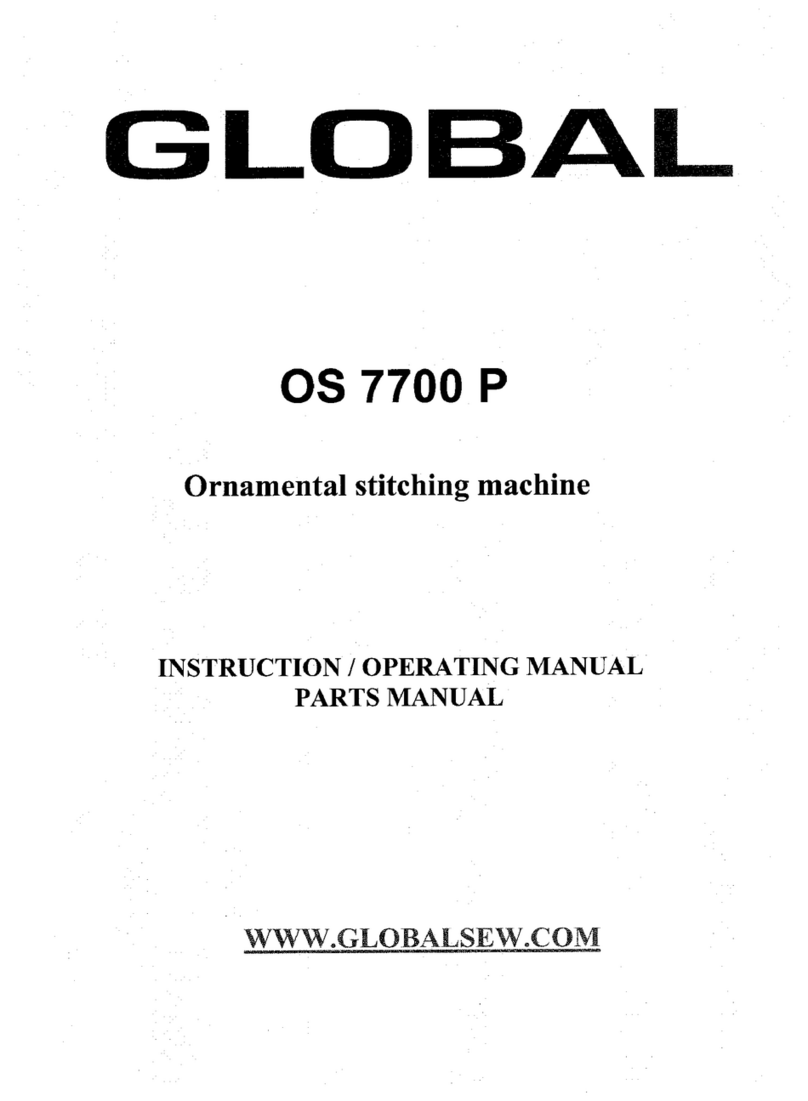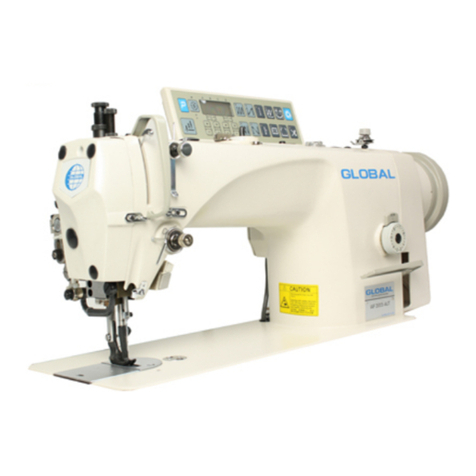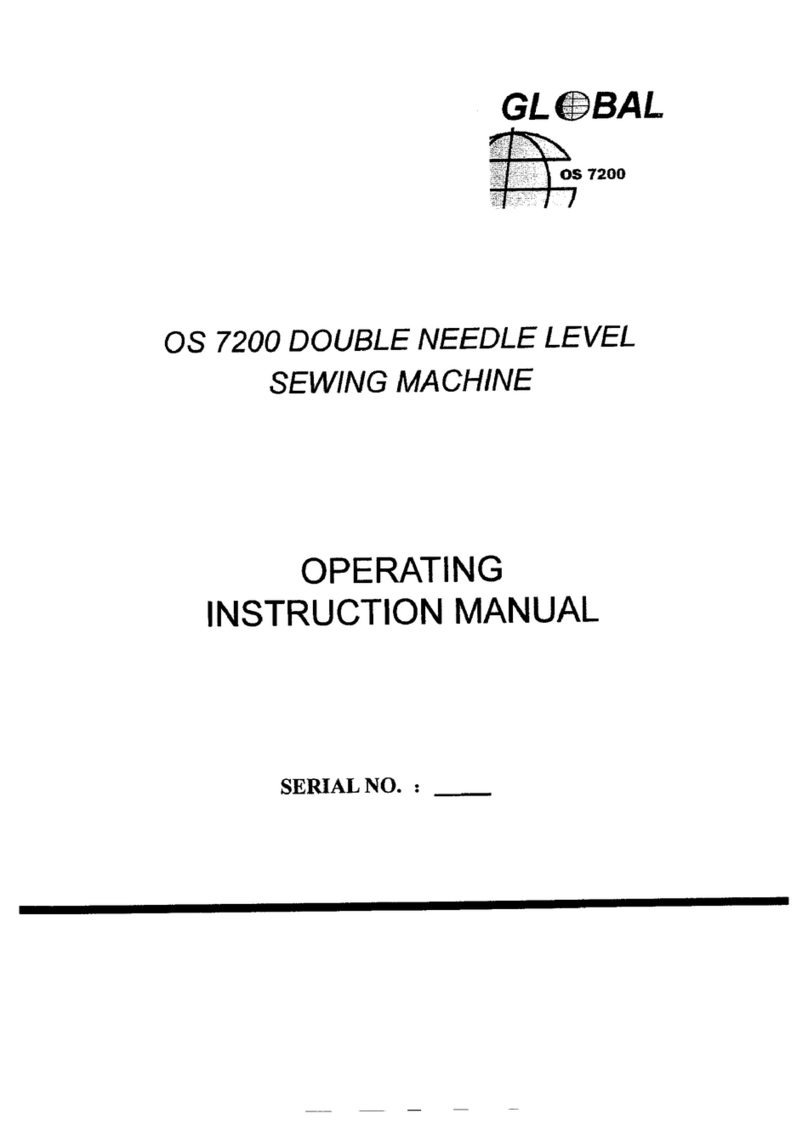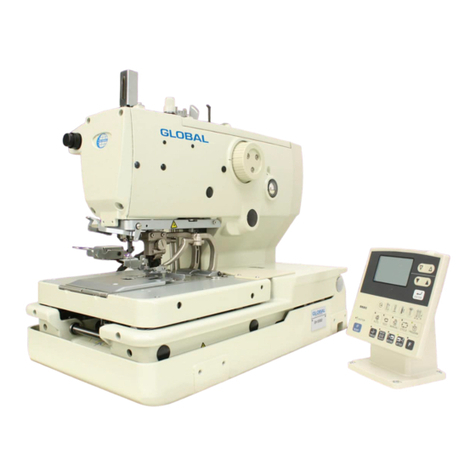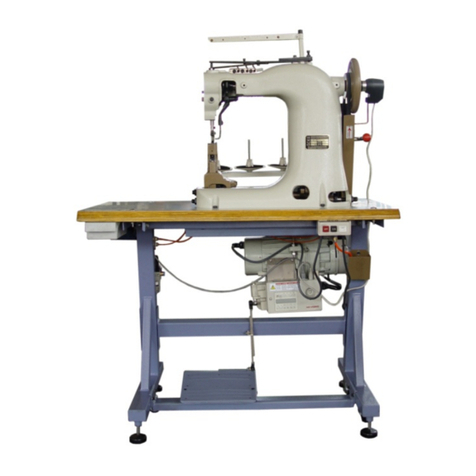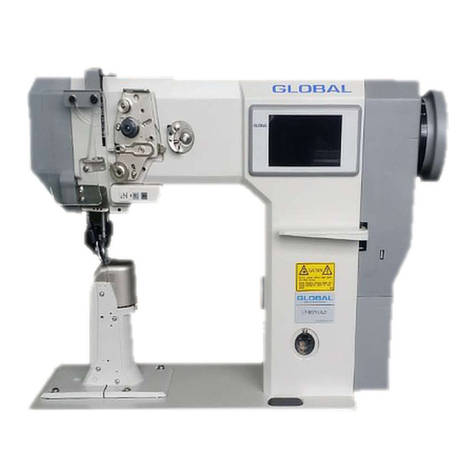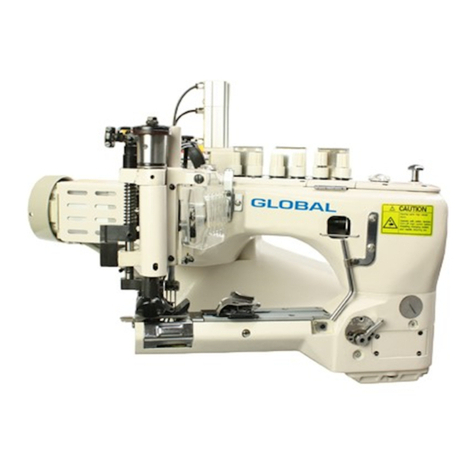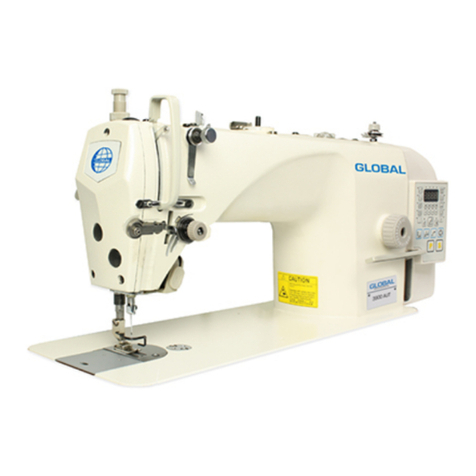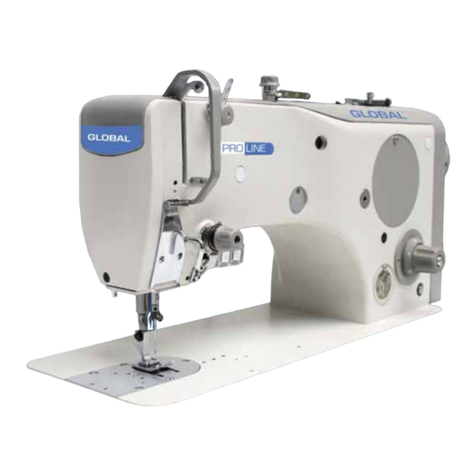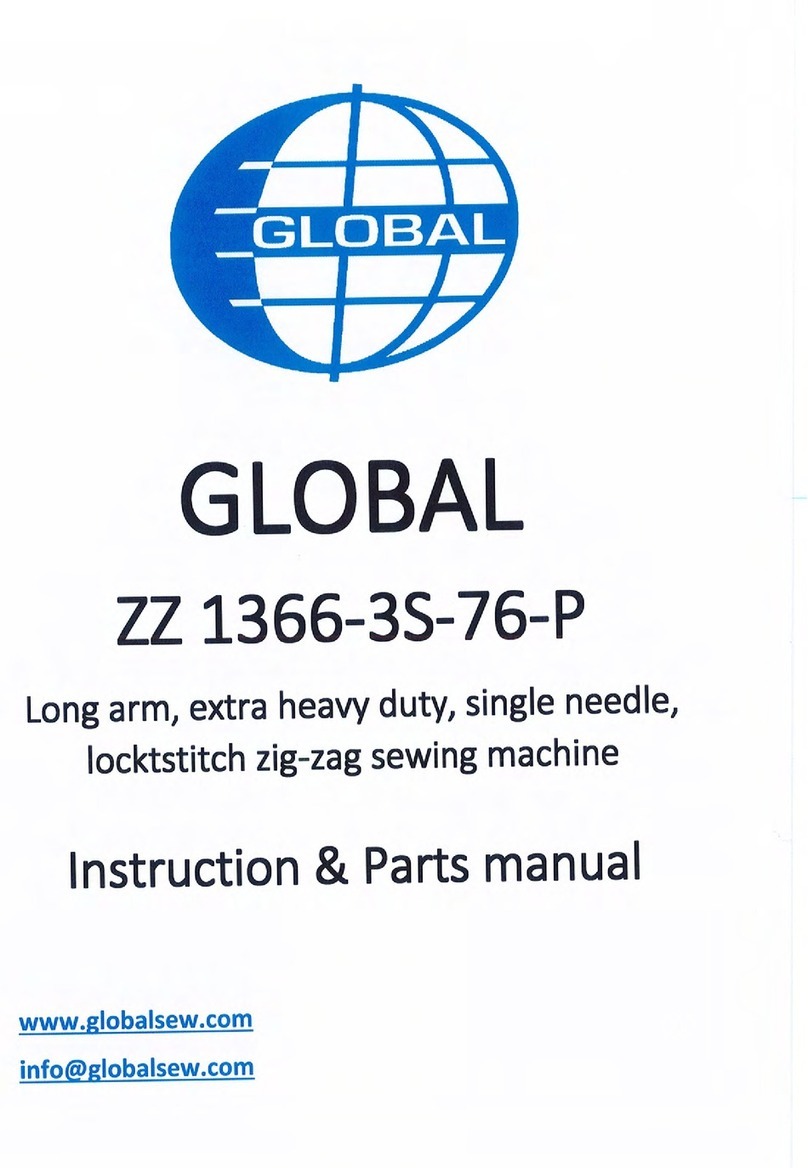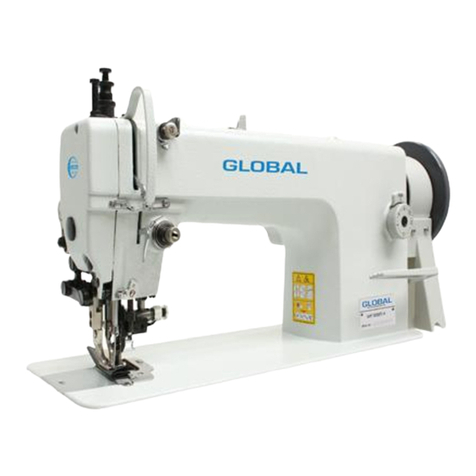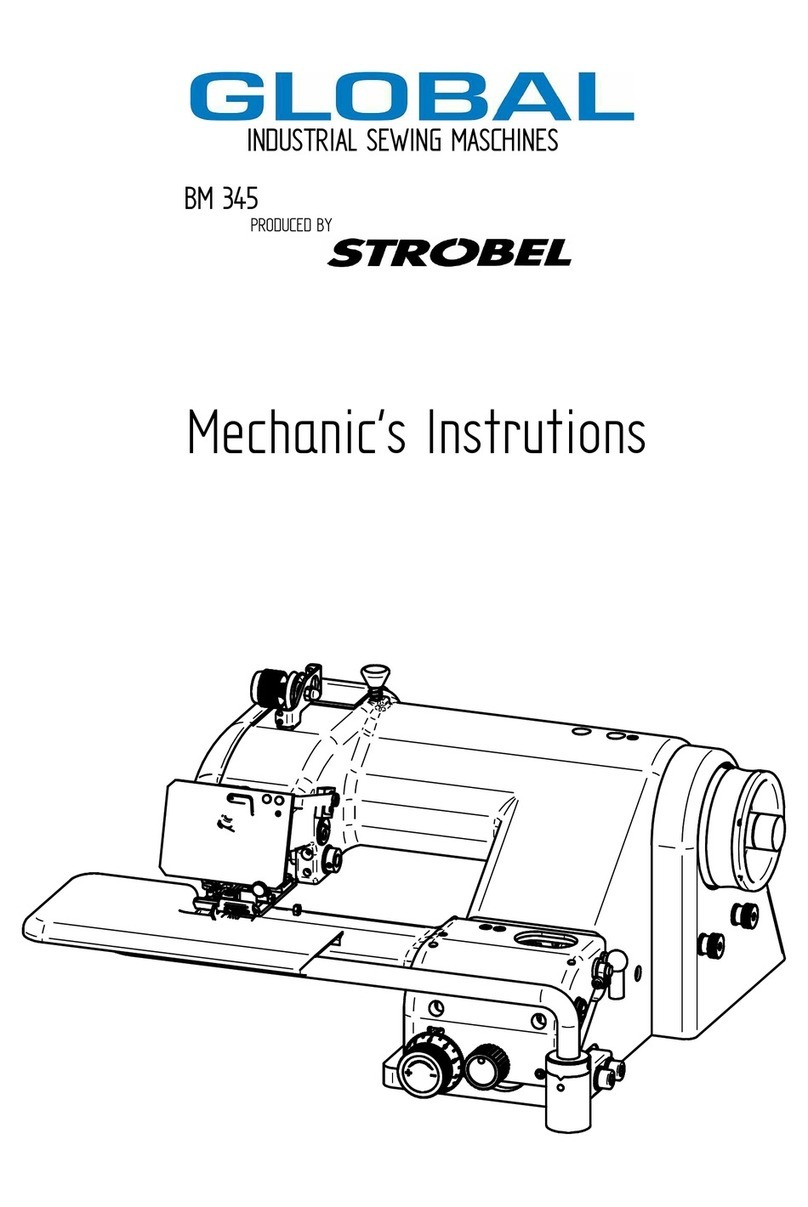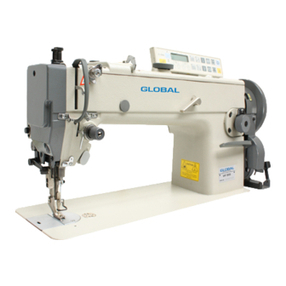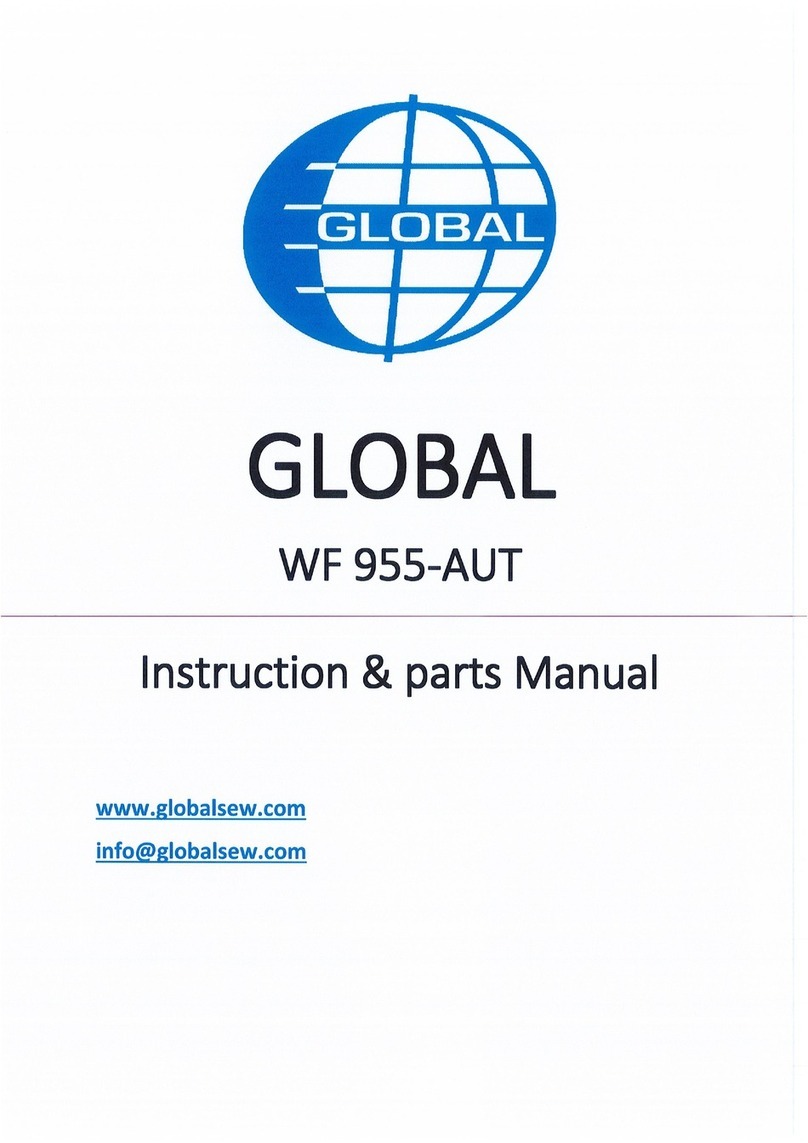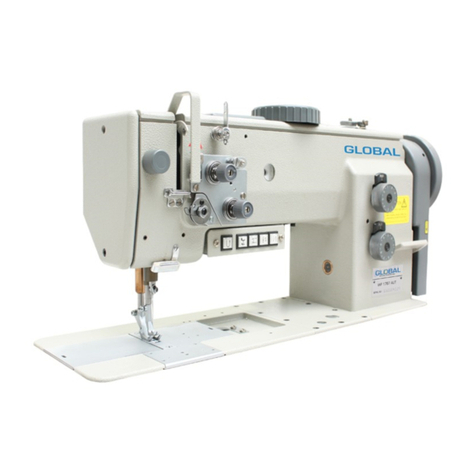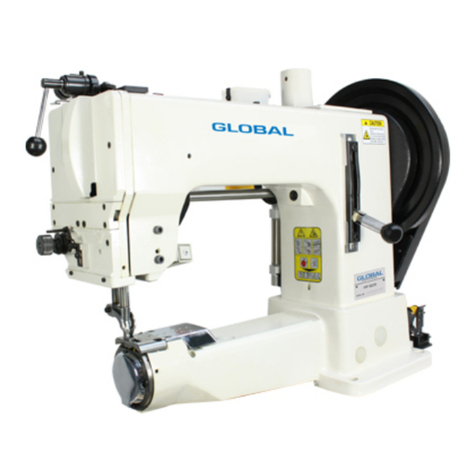
In
principle,thread tension is to be adjusted
in
accordance
with materials,thread and otherfactors.
In
practice,
thread
tension is adjusted according to the
stitches obtained.
The
needle thread tension should be
adjusted with reference
to
the bobbin thread tension.Turn
Tension Spring Regulaating Screw (A)
of
bobbin case
clockwise for
more
tension.or
turn
the screw counter-
clockwise for less tension.
It
is common practice to test the bobbin test the bobbin
thread tension as shown
in
Fig.12 . Hold the end
of
the
thread from delivery eye.
If
the
bobbin
case
is falling
slowly, the proper tens~on is obtained. The needle thread
tension can
be
adjusted by setting (1) the take-up spring
tension.(2) the thread take-up spring stroke and (3) ten-
sion spring.All these adjustments will be described in the
following.
19)
/ADJUST
THREAD
TAKE-UP
SPRING(Fig.18,
19)
1-----------l
A
17
18
The
normal sewing range
of
thread take-up spring is 5-8mm. For sewing light weight materials (short stitch), weaken
the spring tension and widen
the
sewing range
of
spring, while for sewing heavy weight materials, strengthen the spring
tension and shorten the sewing range
of
spring.
1)
Adjusting the thread take-up spring·tension(Fig.18).
Loosen
tension
stud
set
screw (A),
tum
tension stud (B) clockwise to make the spring
get
more tension, or
tum
the
tension
stud
counter
clockwise
to
make
the spring get less tension, After adjustment,
Be
sure to tight tension stud
set screw (A).
The
method
of
adjustment:
Loosen
set
screw (A) first, then
to
turn tension stud (B) counter clockwise
to
release the tension
of
thread take-up
spring (C) to zero, and to turn tension stud
(B)
clockwise until spring (C) just comes into contact with the stop slot
on
the thread take-up spring regulator, then to further turn tension stud
Cl;l)
counterclockwise by 1/2
tum
After adjustment,
tighten tension
stud
set screw (A).
-12-
From the library of Superior Sewing Machine & Supply LLC - www.supsew.com



















